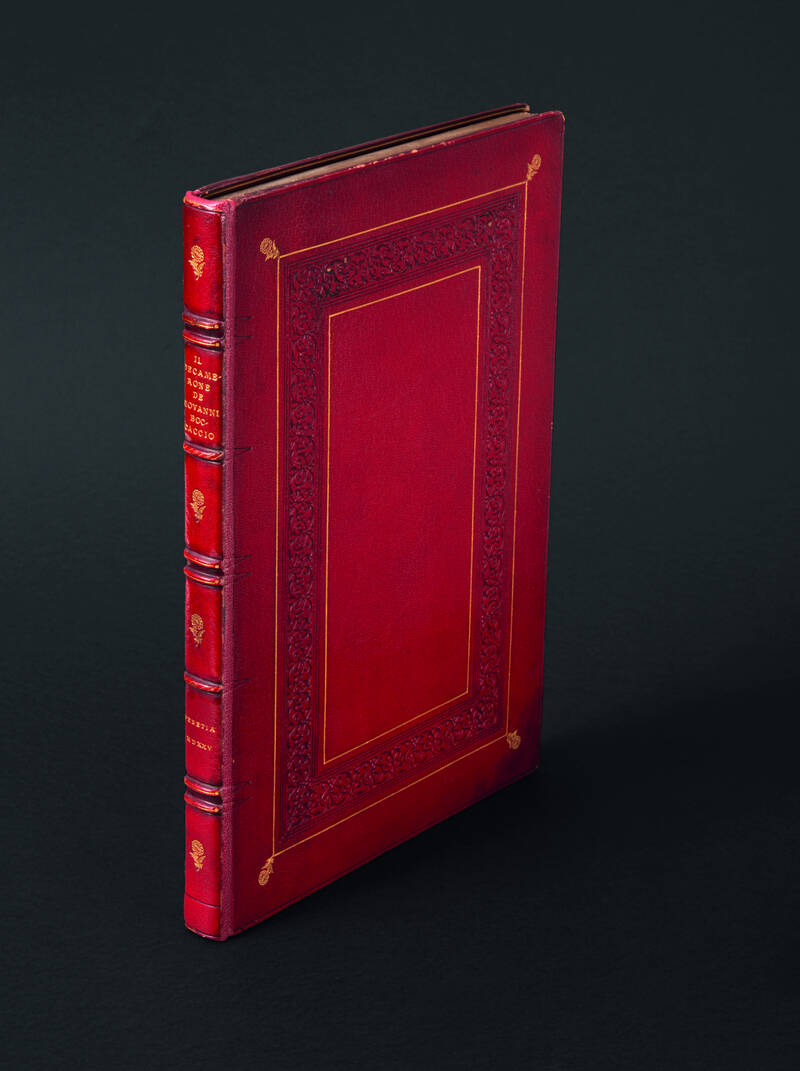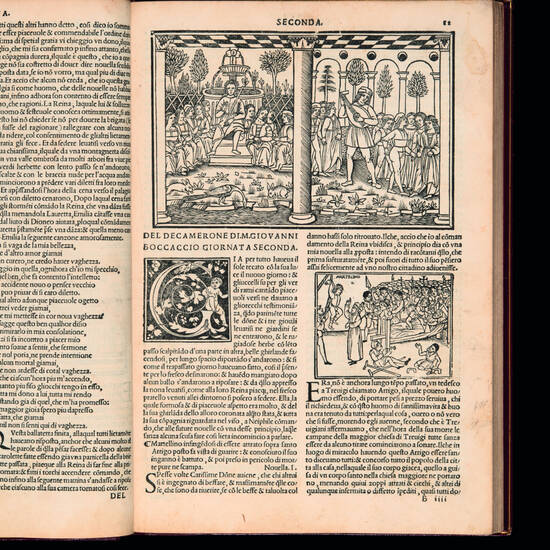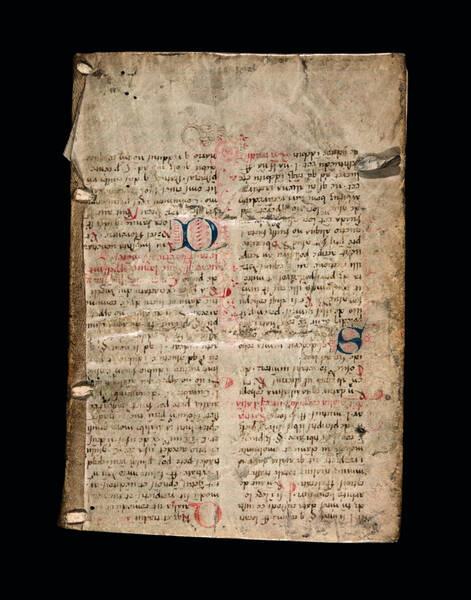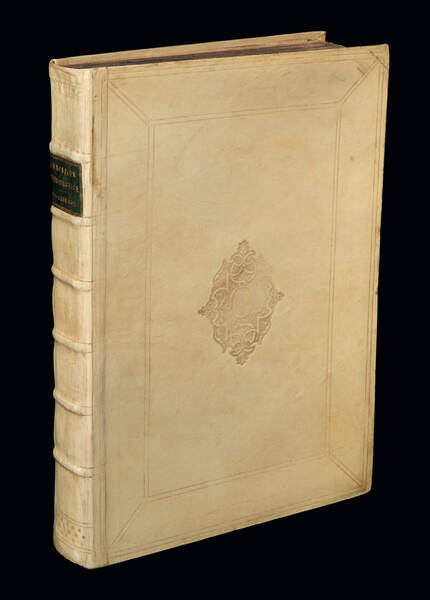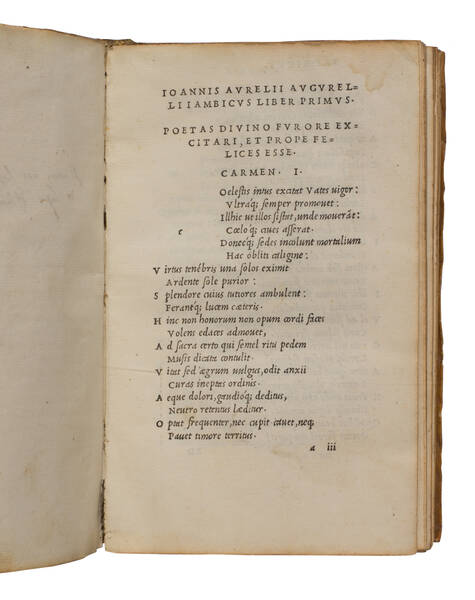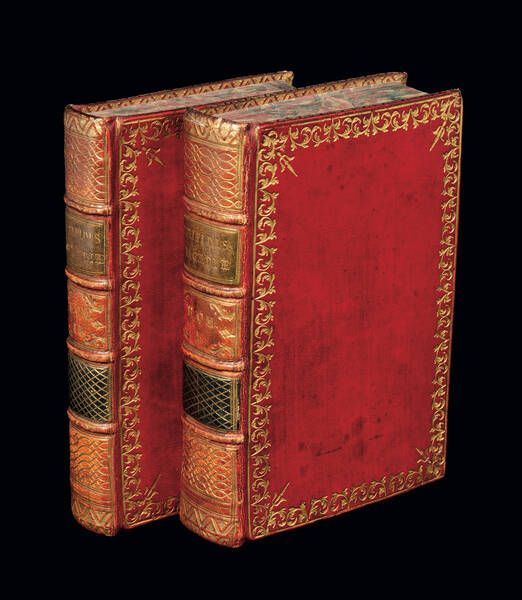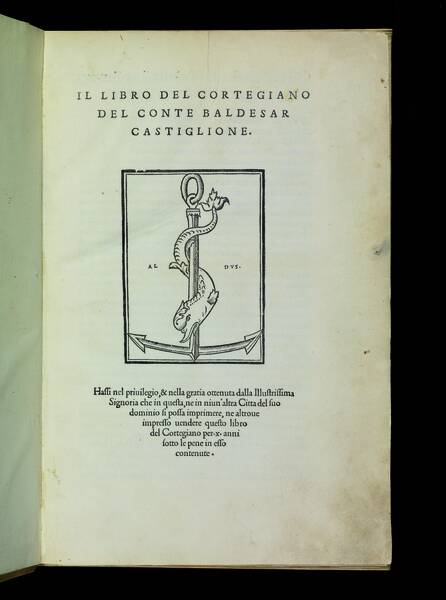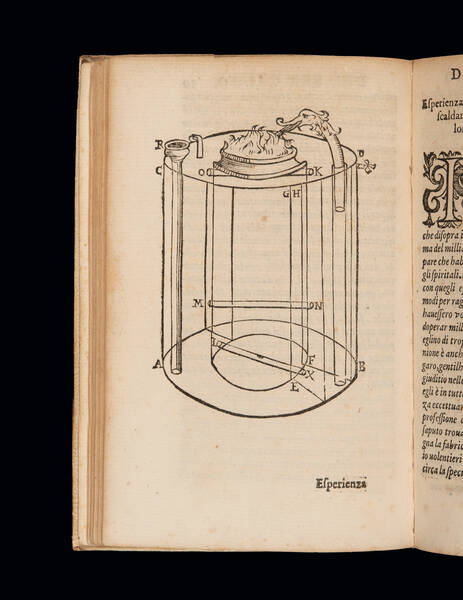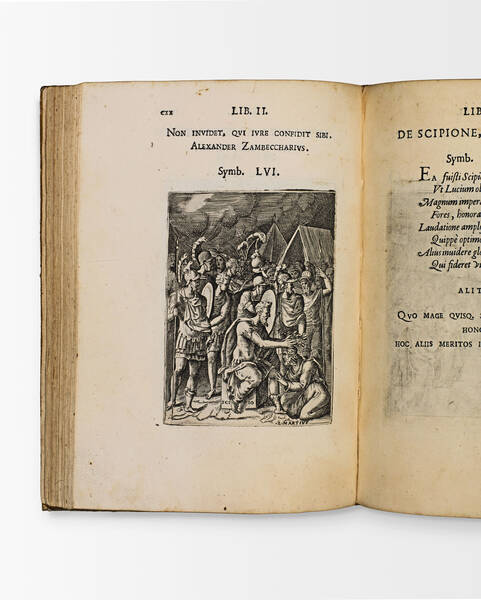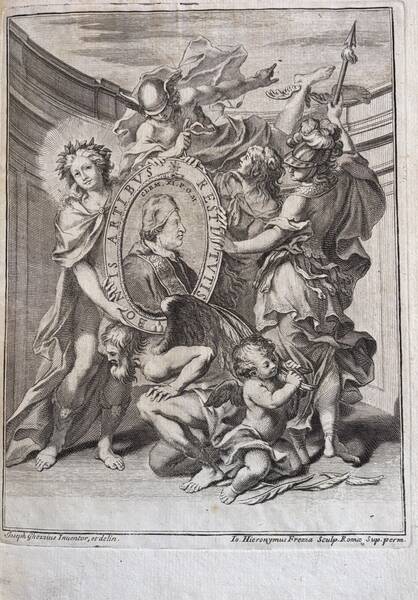BOCCACCIO, Giovanni. Il Decamerone nouamente stampato con tre nouelle agiunte.
Venice, per Bernardino de Viano., 1525.Folio (290 x 200 mm.), [4], 128 leaves, title-border with dolphins, a continuous design in four parts derived from the one used by Tacuino in the 1511 edition of Vitruvius; Tacuino border is the original one and it was one of the most influential pieces of ornamentation of the sixteenth century; near half page woodcut at the beginning of prima giornata repeated at the beginning of all the subsequent giornate; the woodcut is divided in two by a column placed in the center of the image, on the right side we have a young man playing the lute in front of a company of seven women and three men, on the left side there is a man wearing a wreath – possibly Boccaccio himself as a poet laureate – seated before a fountain in a garden with the same company of seven woman and three men for the telling of the tales. Eighty-two smaller woodcut vignettes in the text with scenes from the tales, white on black initials. Some lower corners repaired without touching the printed surface, some staining and spotting, lightly browned, front hinge restored, but a good copy in early twentieth century red crushed paneled morocco gilt by J. Leighton, spine in compartments with gilt title.
A very scarce and profusely illustrated folio edition of the Decameron. It boasts over eighty in-text woodcut vignettes salvaged from an earlier edition printed in 1510 by Bartolomeo de Zanni, as well as ten half-page woodcut illustrations within architectural borders opening each new day, derived from those of the first Venetian illustrated edition of 1492 by Gregorius de Gregoriis. “The figures in this edition are simple in outline, and […] of the purest taste.'' (Brunet I 997)
Written between 1349 and 1353, the Decameron is a seminal work of Italian vernacular literature, shaped by Boccaccio's first-hand witnessing of the devastation of the bubonic plague in Italy. It consists of one hundred tales told by ten young people - seven women and three men - who flee the pestilence in Florence to a countryside villa and attempt to use storytelling to pass the time. Over ten days, each narrator recounts a story that varies in tone, ranging from lewd and comedic to solemn and philosophical, with roots in ancient and medieval literature, as well as folk tales.
The text from this edition is taken from De Gregori's 1516 Venetian edition, compiled and edited by Nicolò Dolfin. It has been acclaimed as one of the most accurate versions of Boccaccio's masterpiece at the time of its publication, showing unprecedented philological diligence. Dolfin “claimed to have restored the work ‘to its whole and clear reading' selecting readings from ‘many very ancient texts'. In practice this meant following the 1472 edition with some recourse to manuscripts. Dolfin's edition proved the more influential. Its text was the main source for the Venetian Decameron of 1522, which was then adopted for two further Venetian editions of 1525 and 1526, although both editions gave readers to understand that the text had been improved by collating authoritative copies.'' (Richardson, p. 44)
An appendix is included, comprising three popular Renaissance novellas erroneously attributed to Boccaccio, first published in conjunction with the Decameron in 1516. These are the Bonaccorso di Lapo Giovanni, the Bianco Alfani, and Grasso Legnaiolo.
USTC lists only 3 copies in the world: none in the US, one in Italy (Lucca), two in the UK (BL & Bodleian); Edit16 lists an additional copy in Biblioteca Rilli-Vettori.
Adams F-687; Brunet, II: 1317; Sander 2832.
Other Books
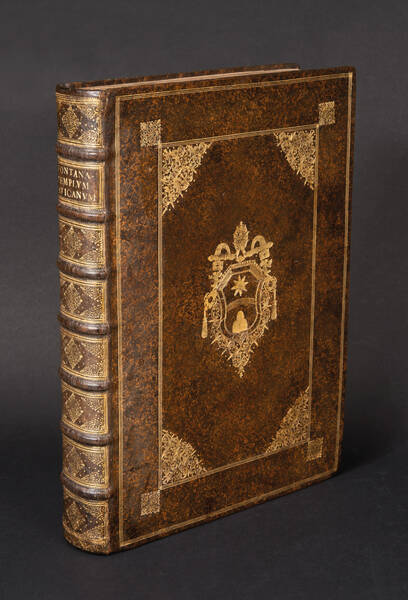
FONTANA, Carlo
Templum Vaticanum et ipsius origo cum aedificiis maximè conspicuis antiquitùs, & recèns ibidem constitutis; editum ab equite Carolo Fontana ... opus...
€ 38.000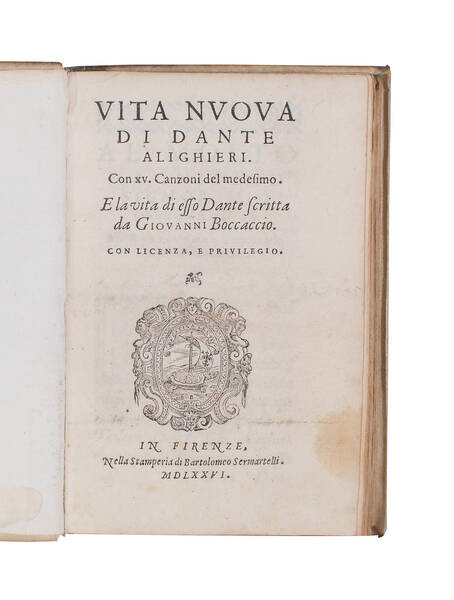
ALIGHIERI, Dante
Vita nuoua di Dante Alighieri. Con XV canzoni del medesimo. E la vita di esso Dante scritta da Giouanni Boccaccio
SOLD OUT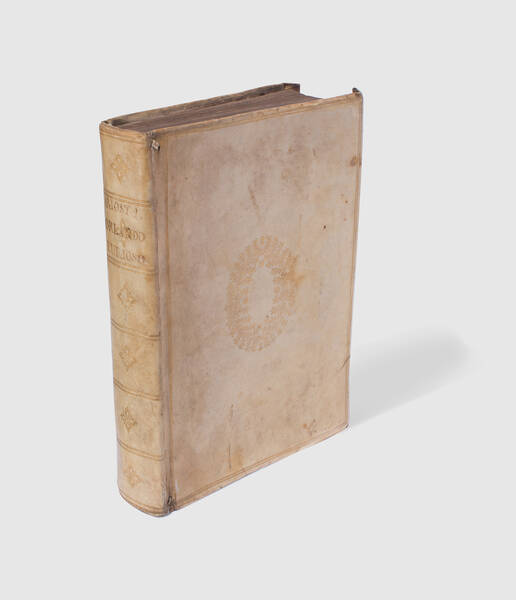
ARIOSTO, Ludovico
Orlando furioso di m. Lodouico Ariosto nuouamente adornato di figure di rame da Girolamo Porro padouano et di altre cose che saranno notate nella...
SOLD OUT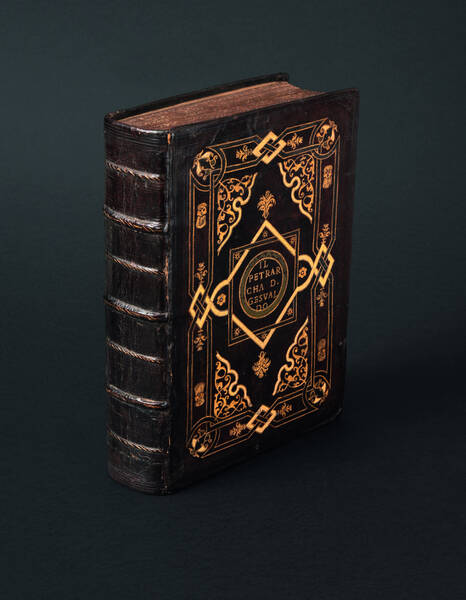
PETRARCA, Francesco
Il Petrarcha colla spositione di misser Giouanni Andrea Gesualdo. I Triomphi del Petrarcha colla spositione di misser Giouanni Andrea Gesualdo da...
SOLD OUT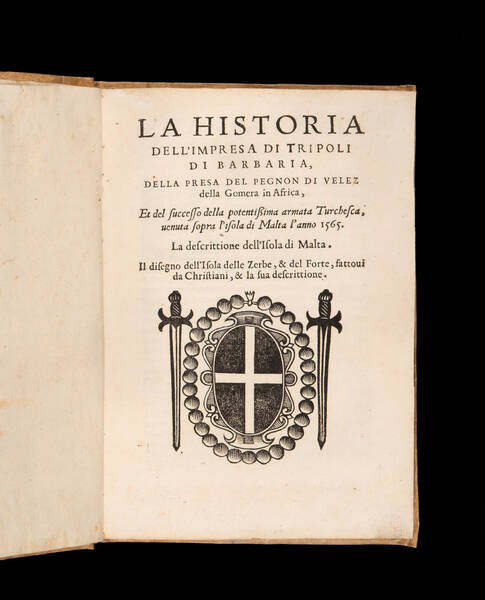
ULLOA, Alfonso de
La Historia dell'impresa di Tripoli di Barberia, della presa del Pegnon di Velez della Gomera in Africa, et del successo della potentissima armata...
€ 12.000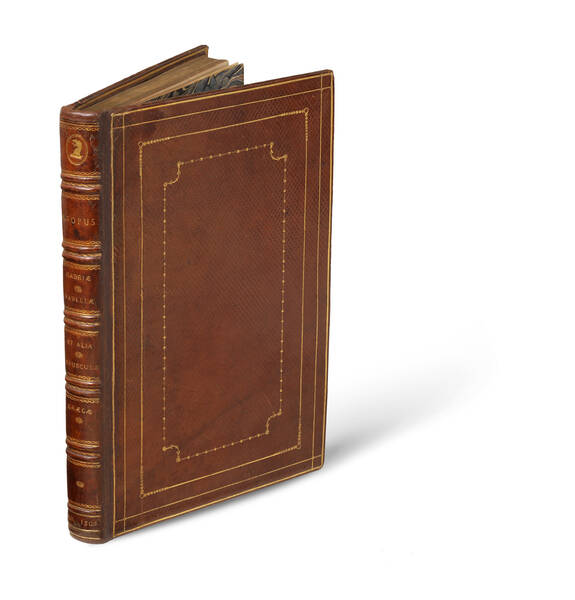
AESOP
Vita & fabellae Aesopi cum interpretatione Latina ... Gabriae Fabellae tres & quadraginta ... Phurnutus seu, ut alii, Curnutus De natura deorum....
€ 36.000![MORE, Sir Thomas. De optimo reip. statu deque nova insula Utopia ... Epigrammata [with:]DESIDERIUS ERASMUS. Epigrammata. MORE, Sir Thomas. De optimo reip. statu deque nova insula Utopia ... Epigrammata [with:]DESIDERIUS ERASMUS. Epigrammata.](https://www.medariquier.com/typo3temp/pics/9344bb41f5.jpg)
MORE, Sir Thomas; DESIDERIUS ERASMUS
MORE, Sir Thomas. De optimo reip. statu deque nova insula Utopia ... Epigrammata [with:] DESIDERIUS ERASMUS. Epigrammata.
€ 50.000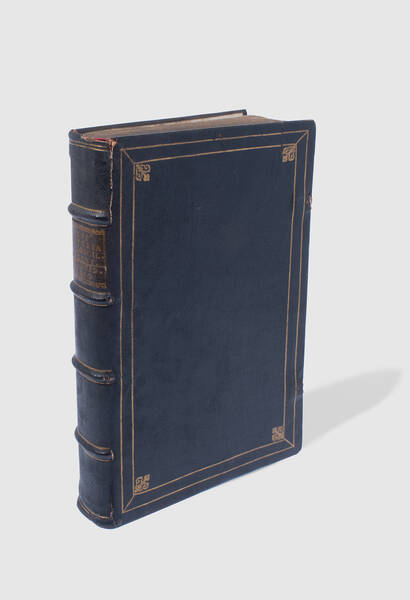
SARPI, Paolo
Historia del concilio tridentino di Pietro Soave Polano. Nella quale si scoprono tutti gl'artificii della Corte di Roma, per impedire che né la...
€ 8.000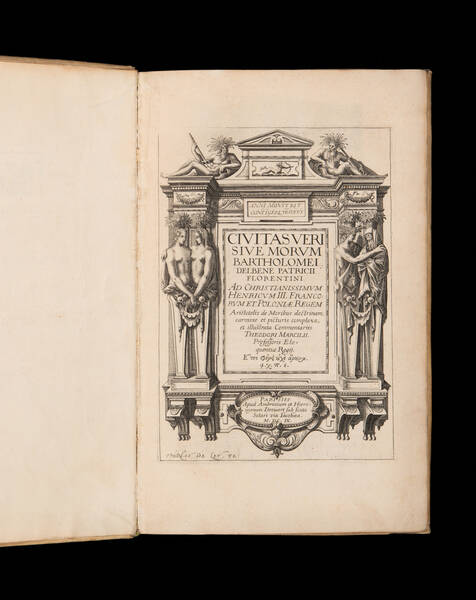
DEL BENE, Bartolommeo
Civitas veri sive morum ... illustrata commentariis Theodori Marcilii.
€ 19.000MEDA RIQUIER rare books ltd.
4 Bury Street St James's
SW1Y 6AB London
Phone +44 (0) 7770457377
info@medariquier.com
